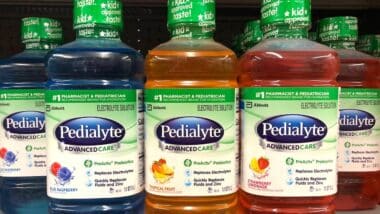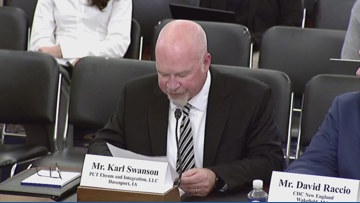The Role of Libraries and Literacy in Achieving Sustainable Development Goals
Libraries are central institutions for the promotion of literacy and lifelong learning, which are fundamental to personal and community development. Literacy is a cornerstone for achieving the United Nations Sustainable Development Goals (SDGs), particularly SDG 4 (Quality Education), which aims to ensure inclusive and equitable quality education and promote lifelong learning opportunities for all. Access to information and the development of literacy skills are critical for education, employment, and economic mobility, directly contributing to several other SDGs.
Literacy as a Multifaceted Tool for Sustainable Development
Literacy extends beyond basic reading and writing to encompass a range of skills essential for navigating the modern world. These competencies are integral to achieving specific SDG targets.
Types of Literacy and Their Connection to SDGs:
- Basic Literacy: Forms the foundation for all education, directly supporting SDG 4 (Quality Education).
- Digital Literacy: Crucial for navigating technology and accessing information, contributing to SDG 9 (Industry, Innovation, and Infrastructure) and SDG 10 (Reduced Inequalities) by bridging the digital divide.
- Financial Literacy: Empowers individuals to make informed financial decisions, which is key to SDG 1 (No Poverty) and SDG 8 (Decent Work and Economic Growth).
- Media Literacy: Fosters critical thinking and the ability to discern credible information, supporting SDG 16 (Peace, Justice and Strong Institutions).
- Cultural Literacy: Promotes understanding and respect among diverse communities, aligning with SDG 10 (Reduced Inequalities) and SDG 11 (Sustainable Cities and Communities).
- Workplace Literacy: Prepares individuals with the necessary skills for professional environments, advancing SDG 8 (Decent Work and Economic Growth).
Grant Funding as a Catalyst for SDG-Aligned Literacy Initiatives
Grant funding is a critical mechanism for enabling and scaling literacy programs that address the SDGs. By providing financial resources, grant-makers empower non-profits, schools, and libraries to expand their reach, innovate their approaches, and create lasting impacts on communities. These programs are instrumental in building human capital, which is essential for sustainable development. Platforms that connect funders with organizations facilitate the efficient allocation of resources toward projects with measurable outcomes aligned with the SDG framework.
Analysis of Available Grant Opportunities
A review of available grants indicates a strong focus on programs that support literacy and education, thereby contributing to multiple Sustainable Development Goals.
Grants to Libraries for Community Initiatives
Funding is available for U.S. nonprofits, schools, and libraries for initiatives in health, education, and the environment. These grants support holistic community development.
- Primary SDGs Supported: SDG 3 (Good Health and Well-being), SDG 4 (Quality Education), SDG 11 (Sustainable Cities and Communities).
Financial Literacy and Housing Programs
Grants are offered to U.S. nonprofits for programs providing families with financial tools and knowledge. This funding aims to improve economic stability and housing security.
- Primary SDGs Supported: SDG 1 (No Poverty), SDG 8 (Decent Work and Economic Growth), SDG 11 (Sustainable Cities and Communities).
Library Grants that Support the Arts
Funding is designated for New Jersey-based nonprofits and libraries to promote the arts through public events and activities, fostering cultural engagement.
- Primary SDGs Supported: SDG 4 (Quality Education), SDG 11 (Sustainable Cities and Communities).
Programs to Promote Education and Literacy
Grants are available for Oregon nonprofits and public libraries to support educational programs, with a specific emphasis on fostering reading and literacy skills.
- Primary SDGs Supported: SDG 4 (Quality Education).
Grants for Teacher-Led Classroom Initiatives
Funding supports Florida teachers in areas such as STEM, literacy, support for low-performing students, and career/technical education to improve educational outcomes.
- Primary SDGs Supported: SDG 4 (Quality Education), SDG 8 (Decent Work and Economic Growth), SDG 10 (Reduced Inequalities).
Grants Promoting Education and Professional Development
Ohio nonprofits can apply for grants supporting adult workforce preparation, early childhood learning, and academic support for students.
- Primary SDGs Supported: SDG 4 (Quality Education), SDG 8 (Decent Work and Economic Growth).
Funding for Mobile Libraries Serving Underrepresented Children
Grants are available to U.S. nonprofits, schools, and libraries to purchase books for mobile libraries serving disadvantaged youth from preschool through 8th grade.
- Primary SDGs Supported: SDG 4 (Quality Education), SDG 10 (Reduced Inequalities).
Grants for Libraries to Improve Internet Capacity
California public libraries can receive funding to improve internet capacity, promote digital inclusion and literacy, and increase broadband accessibility.
- Primary SDGs Supported: SDG 4 (Quality Education), SDG 9 (Industry, Innovation and Infrastructure), SDG 10 (Reduced Inequalities).
Grants for Public Humanities Programming in Libraries
Funding is available for Maine-based organizations, including libraries, for public humanities programming such as discussions, exhibitions, and digital media productions.
- Primary SDGs Supported: SDG 4 (Quality Education), SDG 11 (Sustainable Cities and Communities), SDG 16 (Peace, Justice and Strong Institutions).
Analysis of Sustainable Development Goals (SDGs) in the Article
1. Which SDGs are addressed or connected to the issues highlighted in the article?
The article on literacy programs and grants addresses several Sustainable Development Goals (SDGs). The analysis identifies the following relevant SDGs:
- SDG 4: Quality Education: This is the most prominent SDG in the article. The text focuses on the importance of literacy (basic, digital, financial), lifelong learning, and providing educational resources through libraries and nonprofits. It directly discusses grants for education programs, classroom initiatives, and building libraries.
- SDG 8: Decent Work and Economic Growth: The article explicitly connects literacy to economic outcomes. It states that literacy is “the key to unlocking education, employment, and economic mobility” and mentions “workplace literacy” programs that prepare adults “to succeed in professional environments” and “enter the workforce.”
- SDG 10: Reduced Inequalities: The article highlights initiatives aimed at reducing disparities in access to education and resources. It mentions grants for “mobile libraries serving underrepresented children,” programs for “disadvantaged youth,” and initiatives promoting “digital inclusion” for all.
- SDG 17: Partnerships for the Goals: The entire article is framed around the concept of partnerships. It describes how grant-making organizations (funders) partner with nonprofits, schools, and libraries (implementing organizations) to achieve common goals. This mobilization of financial resources and collaboration is central to SDG 17.
2. What specific targets under those SDGs can be identified based on the article’s content?
Based on the issues discussed, several specific SDG targets can be identified:
- Target 4.4: Increase the number of youth and adults with relevant skills for employment.
- The article emphasizes skills beyond basic reading, such as “digital literacy,” “financial literacy,” and “workplace literacy,” which are all relevant skills for employment and entrepreneurship.
- Target 4.6: Ensure that all youth and a substantial proportion of adults achieve literacy and numeracy.
- The core theme is promoting literacy for all ages. The article mentions grants for “ESL courses,” “literacy workshops for teens,” and programs that “foster reading and literacy” for the general population.
- Target 4.a: Build and upgrade education facilities.
- The article refers to grants that enable a “school to build a library,” a “nonprofit to launch a mobile reading van,” and public libraries “to improve internet capacity,” all of which relate to upgrading educational environments.
- Target 8.6: Substantially reduce the proportion of youth not in employment, education or training.
- The mention of grants for “professional development and educational programs” that support “adults preparing to enter the workforce” and initiatives to increase “graduation rates” directly aligns with this target.
- Target 10.2: Empower and promote the social, economic and political inclusion of all.
- The focus on grants for “mobile libraries serving underrepresented children,” “disadvantaged youth,” and promoting “digital inclusion” aims to ensure that marginalized groups have access to educational resources, thereby promoting their inclusion.
- Target 17.17: Encourage and promote effective public, public-private and civil society partnerships.
- The article’s entire premise is based on partnerships between grant-makers (funders) and civil society organizations (nonprofits, schools, libraries) to fund and implement literacy programs.
3. Are there any indicators mentioned or implied in the article that can be used to measure progress towards the identified targets?
The article implies several indicators that can be used to measure progress:
- Number of literacy and educational programs funded: The article lists various types of grants for programs like “ESL courses,” “literacy workshops,” “STEM education,” and “public humanities programming.” Counting the number of such funded initiatives serves as a direct indicator.
- Amount of financial resources mobilized: The text mentions specific grant amounts, such as “Grants up to $10,000” and “Up to $3,000.” The total value of grants awarded for literacy is a key financial indicator.
- Number of educational facilities improved: Progress can be measured by the number of libraries built, mobile libraries launched, or libraries that have received funding to “improve internet capacity.”
- Number of people reached in target groups: The article mentions programs for “underrepresented children,” “disadvantaged youth,” and “low-performing students.” An indicator would be the number of individuals from these groups who participate in the funded programs.
- Availability of educational materials: The grant to “purchase books for mobile lending libraries” suggests that the number of books or educational resources made available to target communities is a measurable outcome.
- Participation in skills development programs: The number of adults participating in “financial literacy,” “workplace literacy,” or “professional development” programs is a clear indicator for measuring skills acquisition.
4. Table of SDGs, Targets, and Indicators
| SDGs | Targets | Indicators |
|---|---|---|
| SDG 4: Quality Education |
4.4: Increase youth and adults with relevant skills for employment.
4.6: Ensure youth and adult literacy. 4.a: Build and upgrade education facilities. |
– Number of people participating in digital, financial, and workplace literacy programs. – Number of funded literacy programs (e.g., ESL courses, workshops for teens). – Number of libraries built or upgraded. – Number of mobile libraries launched. – Improvement in internet capacity in public libraries. |
| SDG 8: Decent Work and Economic Growth | 8.6: Reduce the proportion of youth not in employment, education or training. |
– Number of adults supported by workforce preparation programs. – Increase in graduation rates. |
| SDG 10: Reduced Inequalities | 10.2: Promote universal social and economic inclusion. |
– Number of programs serving underrepresented children and disadvantaged youth. – Number of individuals from low-performing student groups reached. – Number of books purchased for mobile libraries serving disadvantaged communities. |
| SDG 17: Partnerships for the Goals | 17.17: Encourage effective public, public-private and civil society partnerships. |
– Number of grants awarded to nonprofits, schools, and libraries. – Total amount of financial resources mobilized through grants (e.g., “$10,000,” “$3,000”). – Number of partnerships formed between funders and community organizations. |
Source: grantwatch.com







